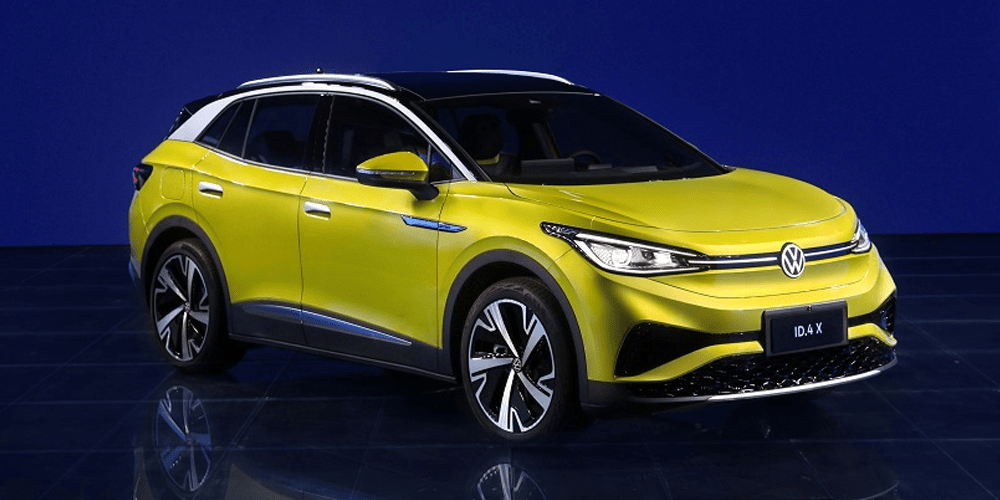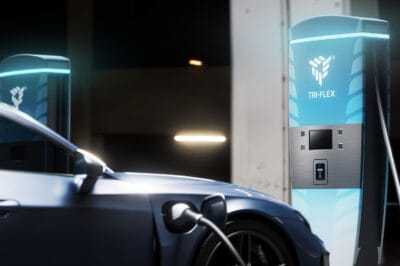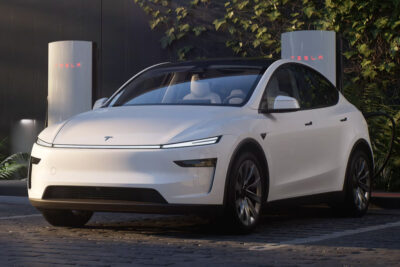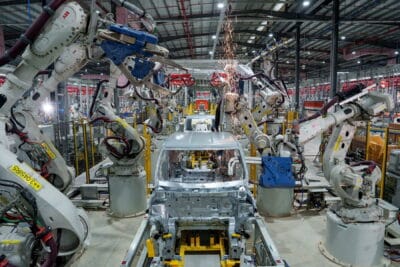Volkswagen suffers disappointing ID.4 sales in China
According to a media report, sales figures for the VW ID.4 in China have so far apparently fallen far short of what the German automaker had hoped for. Only a total of 1,213 vehicles of the two ID.4 electric models were sold in May.
The sales figures were reported by Reuters who cited several people familiar with the matter. Insiders attributed the unpromising debut to a lack of technical features, tough competition, a late launch compared to rivals and problems with a new electric car distribution network in China.
Sales remain far below initial hopes, four people familiar with the matter said. The numbers also lagged behind what some other automakers achieved with early sales of flagship EV offerings in the world’s largest car market. “Sales so far are behind our earlier expectations. We’ve had to dial down production plans for the ID.4 again and again,” said one person, who like the other sources was not authorised to speak to the media and therefore didn’t want to be identified. “This is not healthy, but at the moment customers are not coming to buy them,” the person said, according to the report.
A joint venture between VW and state-owned SAIC Motor makes the slightly larger ID.4-X model. The company had targeted sales of 50,000 to 60,000 vehicles this year, Yang Siyao, a marketing executive at the company, told Chinese media in March. Another joint venture between VW and FAW, which makes the ID.4 Crozz, had similar targets, according to one of the insiders.
Only 1,213 vehicles of the two ID.4 electric SUV models launched just two months earlier were sold together in May. That was about 200 fewer than in April, according to auto consultancy LMC. In addition, both companies’ EV factories were running below 10 per cent of production capacity, according to three of the people.
The Reuters report drew a comparison to Tesla: The electric car maker sold 6,612 units of its Model Y in China in the first two months after launch. The ID.4’s sales performance in China also stands in stark contrast to Europe, where it sold 12,101 units in the first two months after launch, according to Jato Dynamics. Regarding the name Volkswagen, a brand that claims to want to serve everyday people in mass markets, another comparison could be made. Neither Tesla nor Volkswagen have adjusted vehicle sizes to a country that is home to some of the most densely populated cities on earth. The General Motors joint production with Wuling, the ultra-small, ultra-affordable HongGuang Mini EV outsold Tesla models by around five times the sales figures in the last quarter in China. In April this year, 26,592 units of the HongGuang Mini EV were sold. By comparison, the Tesla Model 3, for example, only sold 6,264 units.
For regular-sized passenger cars, Chinese customers now expect a certain amount of technical bling that Volkswagen doesn’t offer. Tesla models and a rapidly growing number of vehicles from Chinese electric car makers like Xpeng Inc and Nio Inc include advanced voice-controlled functions, self-parking features and advanced driving features.
Volkswagen is confident in the matter and expects sales to increase. Speaking to Reuters, the automaker said China sales of the ID.4 were in line with expectations as the company builds production and a new distribution network. The company also pointed to plans for three ID. models, not detailed in the report, to be launched in China this year. These include the VW ID.6, which was unveiled at Auto Shanghai in April. VW also plans to offer new software updates on newer models in the future, it said.
Volkswagen is the largest foreign automaker in China, with 3.85 million vehicles sold last year, most of which were mostly gasoline-powered. The joint ventures’ EV plants, each capable of building 300,000 vehicles a year, were ready for mass production in early 2020. But the company did not receive regulatory approval until July.
VW unveiled the two variants of the ID.4 for the Chinese market late last year. The ID.4 X is the version of the electric SUV developed for SAIC-VW, while the ID.4 Crozz is FAW-VW’s counterpart.
In this regard, the ID.4 X has been slightly adapted, differing from the European version presented in September 2020 with different headlights, taillights and bumpers. For this reason, among other things, it is 20 millimetres longer than the ID.4 that can be ordered in Europe. The ID.4 Crozz from FAW-VW corresponds to the familiar European version.
The basic interior concept with the free-standing touchscreen is the same for both models, but the ID.4 X has a slightly modified centre console – the ID.4 Crozz again corresponds to the EU version built in Zwickau. Space is also identical, as the width and wheelbase are the same on the ID.4 X and ID.4 Crozz. As mentioned, the two-centimetre difference in length is mainly due to differently shaped bumpers.
In China, prices of the ID.4 X and ID.4 Crozz start at around 199,900 yuan after subsidies (equivalent to around 25,000 euros and 31,000 U.S. dollars) and are offered in five trim levels. The cheapest versions in each case for under 200,000 yuan only manage an NEDC range of 400 kilometres. The smaller 58-kWh battery is installed here, while the ID.4 can currently only be ordered with the large 77-kWh battery in Germany.
Including reporting by Domenico Sciurti





0 Comments